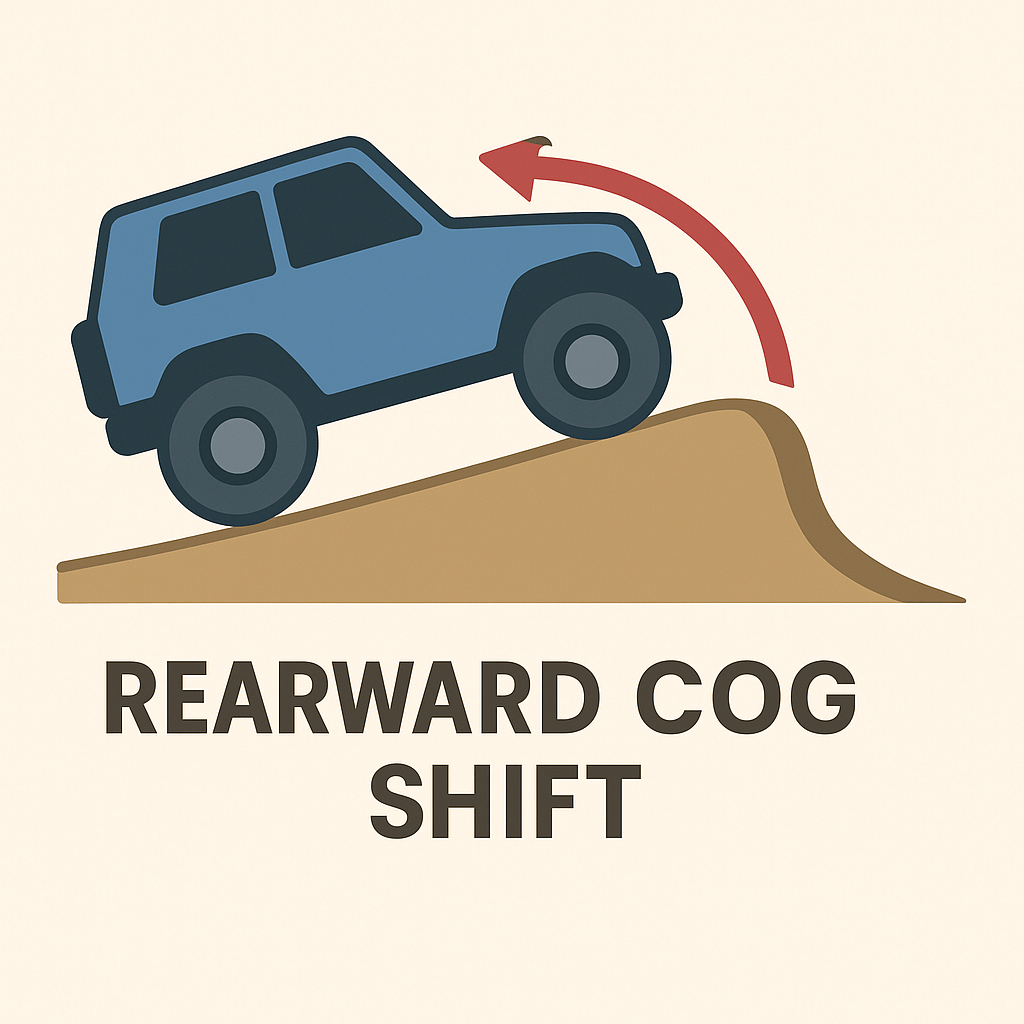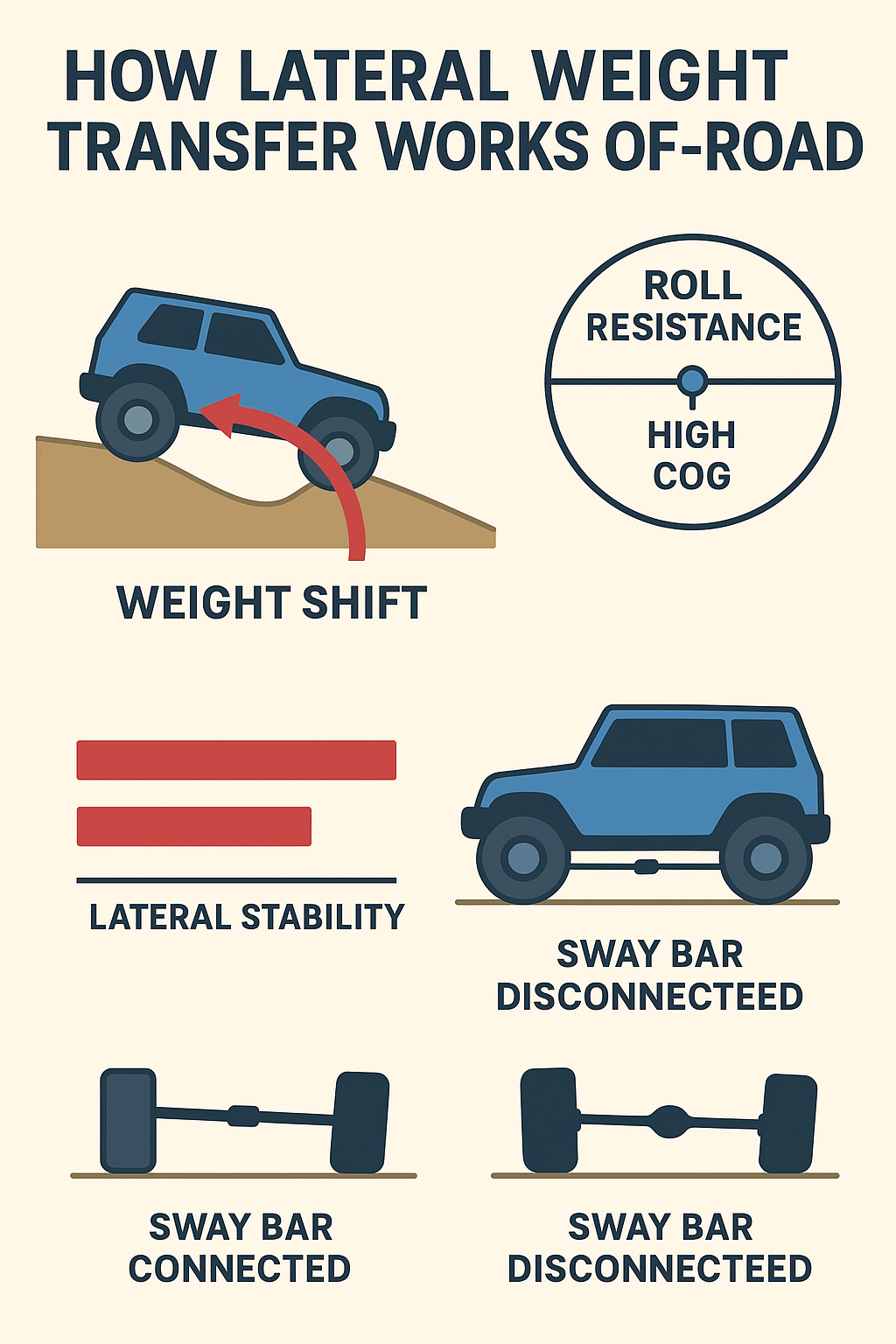Module 1 – Advanced Vehicle Dynamics & Weight Transfer
Vehicle dynamics in off-roading is about understanding how weight moves through your chassis in real time and how that affects traction, stability, and safety.
When you accelerate uphill, weight shifts rearward. The rear tires gain grip while the front becomes lighter — which is great for traction but risky at the top of a hill where cresting with too much throttle can lift the front wheels, shifting COG backward enough to cause a pitch-over rollover.

On steep descents, gravity forces weight forward, which lightens the rear axle and can cause it to lock up under braking. This can make the vehicle pivot around the front wheels. Using engine braking in low-range, with gentle modulation, maintains stability.
Off-camber terrain introduces lateral weight transfer. The uphill tires carry less weight, and the downhill tires are loaded. The more abrupt the slope change, the greater the rollover potential. Small driver corrections — steering into the slope slightly, slowing to reduce inertia — make huge differences in safety.

Understanding your vehicle geometry matters.
Approach angle = max slope before the front bumper hits.
Departure angle = max slope before the rear bumper drags.
Breakover angle = max crest before the chassis high-centers.
Suspension setup plays a role too. Disconnecting sway bars allows independent wheel movement, increasing articulation and keeping more rubber in contact with the surface. Long-travel suspension systems improve obstacle handling, but require careful tuning of spring rate and damping to prevent body roll or suspension rebound that could unbalance the rig mid-maneuver.

